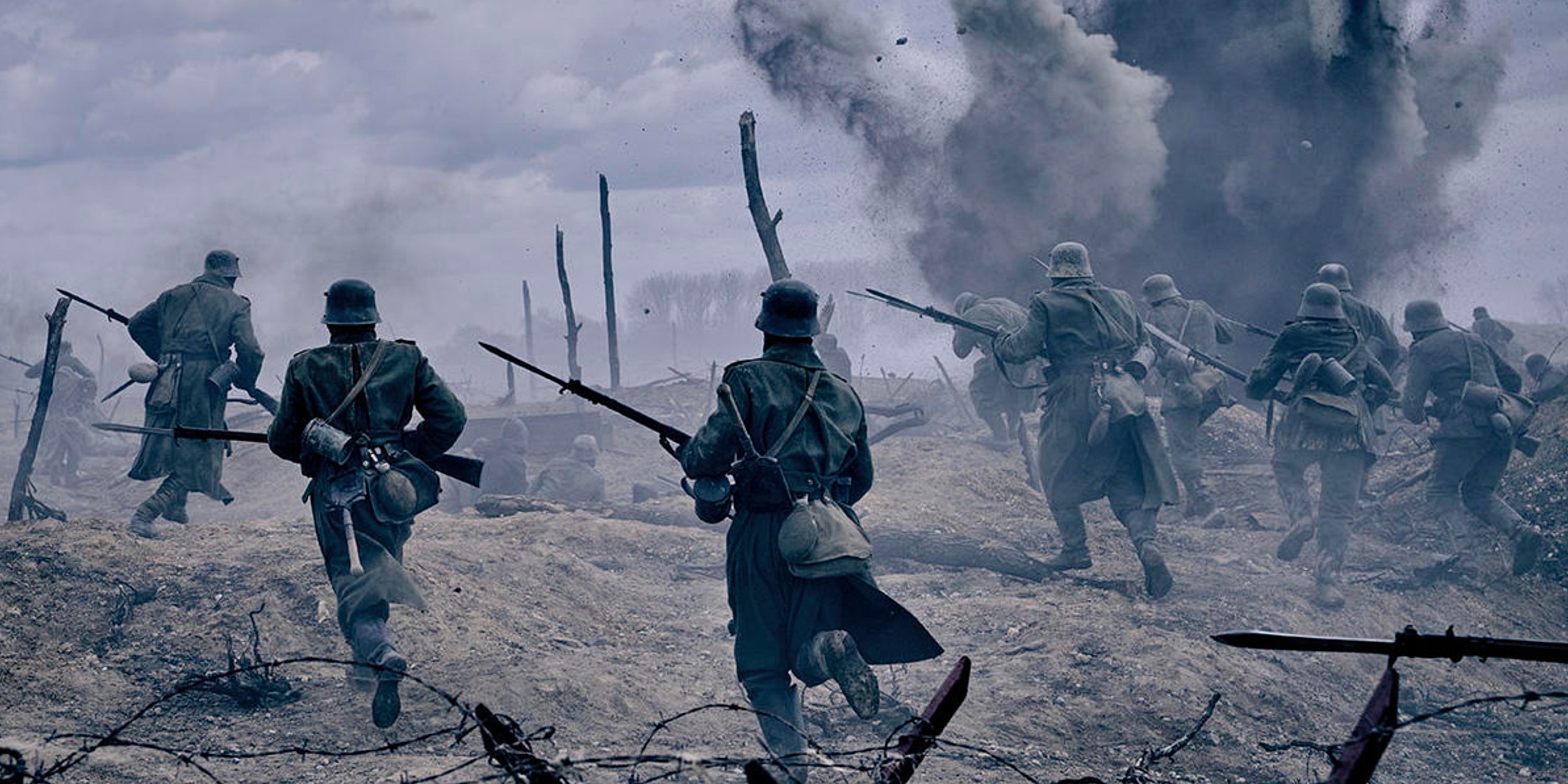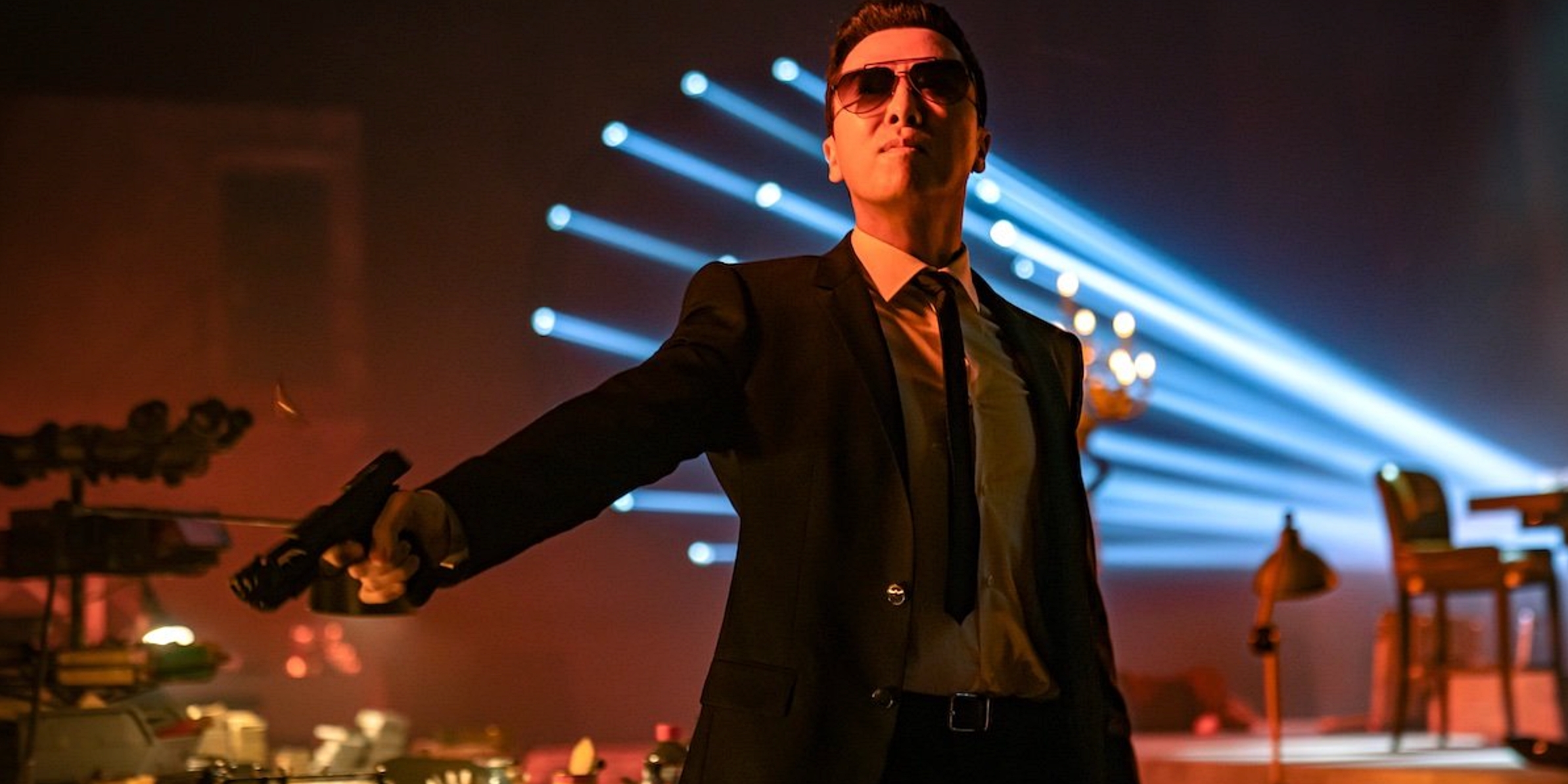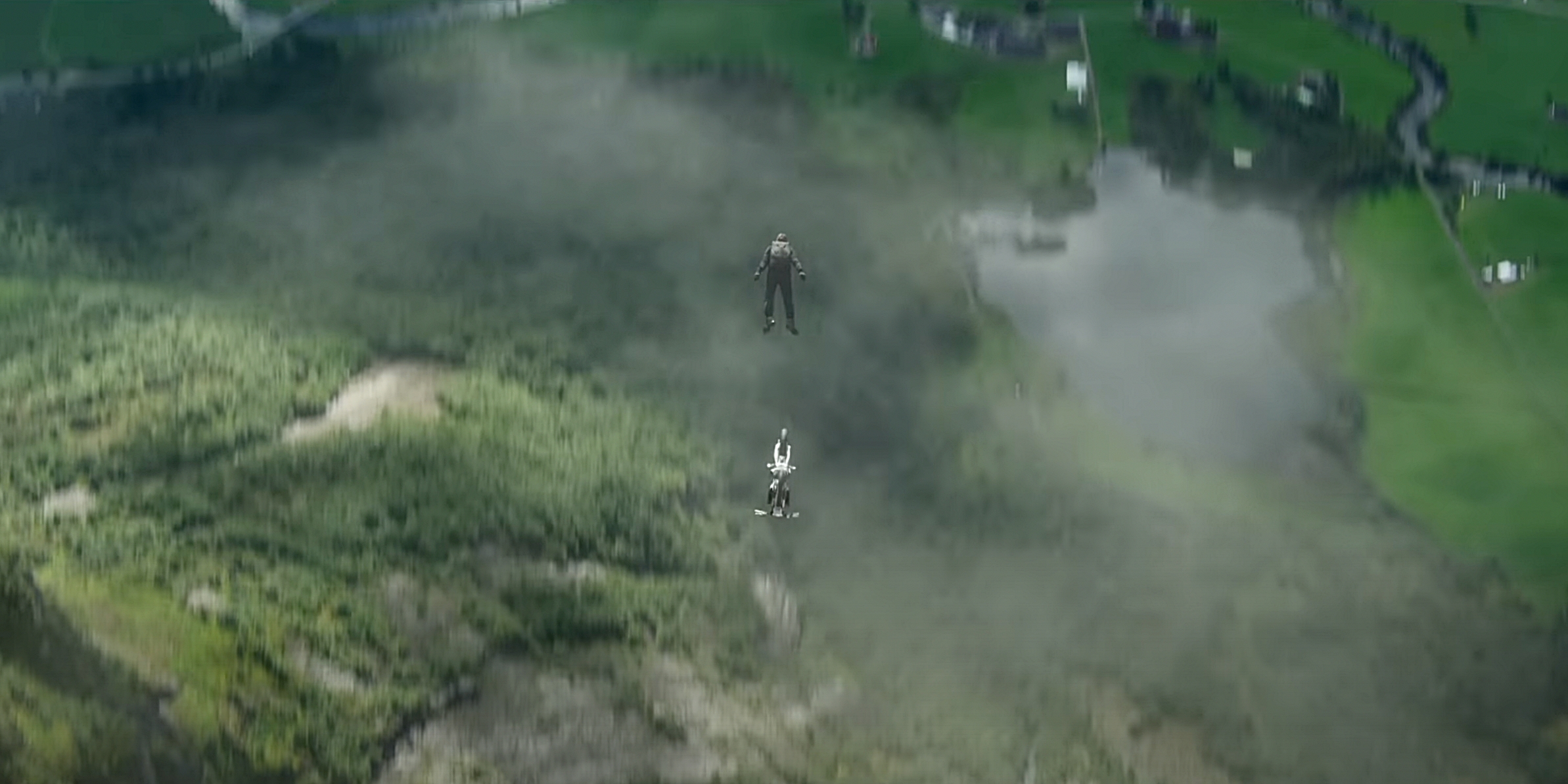The 95th Academy Awards have wrapped up, and action-fueled spectacles won the night with “Top Gun: Maverick” taking home Best Sound, “Avatar: The Way Of Water” winning Best Visual Effects, and the anti-war epic “All Quiet On The Western Front” receiving four Oscars, including Best Cinematography. But, the real story was the highly original “Everything Everywhere All At Once” winning seven Academy Awards, including Best Picture, Director, and Best Actress for Michelle Yeoh — who made history as the first Asian actress to win in the category. Yet, with all of these action genre films dominating the Oscars, it begs the question: Is it time for an Oscar for Best Stunts to join the other 23 categories given out by the Academy?
Ever since the silent film era — before the first Academy Awards ceremony — stunt work has always had a special place in filmmaking. From Buster Keaton’s daredevil wall stunt in “Steamboat Bill Jr.” to the modern-day Tom Cruise as Ethan Hunt jumping out of the tallest building in the world in “Mission: Impossible – Ghost Protocol,” stunt coordination has often played a significant part in the storytelling and given audiences a memorable cinematic experience. Even before the 95th Oscars, with Best Picture-nominated action films such as “Mad Max: Fury Road” and the first “Black Panther,” it’s become clear the Academy is slowly but surely accepting these types of stories with more frequency.
Industry professionals and veterans have mentioned the importance of acknowledging the hard work of stunt crews; for example, Brad Pitt shouted out stunt work in his Best Supporting Actor acceptance speech at the Oscars for his role in “Once Upon A Time In Hollywood” as Cliff Booth, a stunt double in the late 1960s Hollywood film industry. Chad Stahelski (the director of the “John Wick” franchise, including the upcoming “John Wick: Chapter 4“) has spoken on this topic of the addition of a Best Stunts category at the Oscars. Most of his opinions align with how vital stunts are as a part of the experience when creating films to excite audiences or trying to push a story forward with entertaining setpieces. Art director Christian M. Goldbeck (who recently won Best Production Design for “All Quiet On The Western Front“) talked about how some of his work on designing the muddy and ridged terrain was designed to be safely mapped out on the battlefield and designed explicitly for the stunt crew to be safe during the battle sequences. As such, everything is connected in how it works in the film’s favor. And, of course, there are pros and cons to this proposed new category, which I will lay out here…
Pro: Industry Acknowledgment The Academy Of Motion Picture Arts and Sciences (AMPAS) prides itself on being the best of the best in annually acknowledging the hard work and celebration of films, both in front of the camera and behind the scenes. Multiple films involve complicated layers of stunt work from a dedicated crew that must convince audiences of the realism portrayed by practicing safety at every turn. Best Cinematography, which has existed since the first Academy Awards ceremony, is an art form that captures the images that make a motion picture. Oscar-winning films such as “All Quiet On The Western Front” have been given strong acknowledgment by critics and the industry of what they captured in the harsh realities and horrific hell of war. There’s also the Oscar-winning cinematography on the foreign language action film “Crouching Tiger, Hidden Dragon,” which is famous for how it captured mystifying martial arts and wirework. Many people claim to be in awe of what they are witnessing on screen. And while the Academy acknowledges the “how” behind capturing an image, no one seems to ask themselves precisely what is being caught in a shot to tell a story. Whenever we see Oscar wins like Michelle Yeoh in “Everything Everywhere All At Once” or Russell Crowe in “Gladiator,” how often do people wonder how those actors could display such artful movements in their combat scenes? The artistic expression of stunt work crosses over with these other already-honored Oscar categories. So why are we not acknowledging the stunt crew? Their [often] risky decisions are just as important to tell a story as performance, cinematography, sound, editing, production design, etc. Adding a stunt category can be an opportunity for the Academy to highlight an often undersung area in storytelling that is gaining more notoriety as the years go on.
The Academy Of Motion Picture Arts and Sciences (AMPAS) prides itself on being the best of the best in annually acknowledging the hard work and celebration of films, both in front of the camera and behind the scenes. Multiple films involve complicated layers of stunt work from a dedicated crew that must convince audiences of the realism portrayed by practicing safety at every turn. Best Cinematography, which has existed since the first Academy Awards ceremony, is an art form that captures the images that make a motion picture. Oscar-winning films such as “All Quiet On The Western Front” have been given strong acknowledgment by critics and the industry of what they captured in the harsh realities and horrific hell of war. There’s also the Oscar-winning cinematography on the foreign language action film “Crouching Tiger, Hidden Dragon,” which is famous for how it captured mystifying martial arts and wirework. Many people claim to be in awe of what they are witnessing on screen. And while the Academy acknowledges the “how” behind capturing an image, no one seems to ask themselves precisely what is being caught in a shot to tell a story. Whenever we see Oscar wins like Michelle Yeoh in “Everything Everywhere All At Once” or Russell Crowe in “Gladiator,” how often do people wonder how those actors could display such artful movements in their combat scenes? The artistic expression of stunt work crosses over with these other already-honored Oscar categories. So why are we not acknowledging the stunt crew? Their [often] risky decisions are just as important to tell a story as performance, cinematography, sound, editing, production design, etc. Adding a stunt category can be an opportunity for the Academy to highlight an often undersung area in storytelling that is gaining more notoriety as the years go on.
Pro: Audience Acknowledgment In recent years, the Academy has made some not-so-popular decisions heavily suspected to be done to boost ratings and/or expand its audience — including the one-announced (but thankfully never officially introduced) Best Popular Film award. For the 94th Academy Awards, the Academy also took specific categories out of the main telecast to shorten the show’s length; at this same ceremony, they added an “Oscars Cheer Moment” award that was voted on by the public. Many would rightfully accuse the Academy of catering to an audience that isn’t all that excited about their shows in the first place rather than catering to their faithful fans who appreciate the craft of filmmaking and wish to see these talented artisans honored in the aftermath of such a shamefully distasteful ploy. In response to the backlash from last year’s ceremony, the 95th Academy Awards was a back-to-normal setting that featured all categories on the telecast and showed respect for the art of filmmaking. The result was an increase in viewership compared to last year. While this was in no doubt helped by pre-announced live-musical number performances and a growing number of popular films nominated (some of which we mentioned above) for Oscars, a new stunt category would be another way to grab more subscribers’ attention while giving a respectful and appropriate new addition to the Oscar categories. This could be a great marketing tool in the future because when other awards bodies present stunt categories, they tend to go to big, well-known blockbuster titles more well-known to the average moviegoer. This is where you’d see movies like “Top Gun: Maverick,” “Avatar: The Way Of Water,” “The Batman,” “Black Panther: Wakanda Forever” and maybe even films that did not receive a single Oscar nomination, such as “The Woman King” here. Not only could this improve viewership, but it could also pay respect to the moviegoing audience by honoring films they love with something of merit, which can require risky and, at times, dangerous work from those involved. This would not be something that can come off as a cheap gimmick to deflate people’s enthusiasm for admiration of filmmaking or the Oscars.
In recent years, the Academy has made some not-so-popular decisions heavily suspected to be done to boost ratings and/or expand its audience — including the one-announced (but thankfully never officially introduced) Best Popular Film award. For the 94th Academy Awards, the Academy also took specific categories out of the main telecast to shorten the show’s length; at this same ceremony, they added an “Oscars Cheer Moment” award that was voted on by the public. Many would rightfully accuse the Academy of catering to an audience that isn’t all that excited about their shows in the first place rather than catering to their faithful fans who appreciate the craft of filmmaking and wish to see these talented artisans honored in the aftermath of such a shamefully distasteful ploy. In response to the backlash from last year’s ceremony, the 95th Academy Awards was a back-to-normal setting that featured all categories on the telecast and showed respect for the art of filmmaking. The result was an increase in viewership compared to last year. While this was in no doubt helped by pre-announced live-musical number performances and a growing number of popular films nominated (some of which we mentioned above) for Oscars, a new stunt category would be another way to grab more subscribers’ attention while giving a respectful and appropriate new addition to the Oscar categories. This could be a great marketing tool in the future because when other awards bodies present stunt categories, they tend to go to big, well-known blockbuster titles more well-known to the average moviegoer. This is where you’d see movies like “Top Gun: Maverick,” “Avatar: The Way Of Water,” “The Batman,” “Black Panther: Wakanda Forever” and maybe even films that did not receive a single Oscar nomination, such as “The Woman King” here. Not only could this improve viewership, but it could also pay respect to the moviegoing audience by honoring films they love with something of merit, which can require risky and, at times, dangerous work from those involved. This would not be something that can come off as a cheap gimmick to deflate people’s enthusiasm for admiration of filmmaking or the Oscars.
Con: Dangerous Risk How far is one willing to go to receive an Oscar nomination or win? Some filmmakers are eager to work in harsh and/or off-color environments to capture those perfect shots that can lead them to the gold statue. Even someone like Leonardo DiCaprio in “The Revenant” ate a raw bison’s liver which led him — a vegetarian — to an unforgettable Oscar win in 2015. Imagine the same type of thing happening for stunt crews or coordinators if they knew that such a category existed at the Oscars. While yes, people are often driven by love for the craft rather than by awards, actors such as Tom Cruise, Jackie Chan, and Halle Berry work hard with their stunt coordinators to deliver unforgettable moments for the audience and often at great risk to themselves. But, even then, consequences can arise for people who really want that golden statue. Even when awards aren’t in the picture, stunt doubles, actors, and coordinators can go through some dangerous experiences, even if they are heavily rehearsed and well-planned. People have been severely injured — and have even died — in the past while trying to do their jobs on set. While it’s fair to weigh in the idea of awarding what can be a hazardous craft and outstanding achievements to push the boundaries of filmmaking from people in that section of the industry, it’s also fair to look conversely at what the risk is to individuals trying harder and potentially putting themselves in more danger to receive such a prestigious honor. If one thinks about creating such a category at the Oscars, these are some things to consider deeply.
How far is one willing to go to receive an Oscar nomination or win? Some filmmakers are eager to work in harsh and/or off-color environments to capture those perfect shots that can lead them to the gold statue. Even someone like Leonardo DiCaprio in “The Revenant” ate a raw bison’s liver which led him — a vegetarian — to an unforgettable Oscar win in 2015. Imagine the same type of thing happening for stunt crews or coordinators if they knew that such a category existed at the Oscars. While yes, people are often driven by love for the craft rather than by awards, actors such as Tom Cruise, Jackie Chan, and Halle Berry work hard with their stunt coordinators to deliver unforgettable moments for the audience and often at great risk to themselves. But, even then, consequences can arise for people who really want that golden statue. Even when awards aren’t in the picture, stunt doubles, actors, and coordinators can go through some dangerous experiences, even if they are heavily rehearsed and well-planned. People have been severely injured — and have even died — in the past while trying to do their jobs on set. While it’s fair to weigh in the idea of awarding what can be a hazardous craft and outstanding achievements to push the boundaries of filmmaking from people in that section of the industry, it’s also fair to look conversely at what the risk is to individuals trying harder and potentially putting themselves in more danger to receive such a prestigious honor. If one thinks about creating such a category at the Oscars, these are some things to consider deeply.
With that said, due to the release of “John Wick: Chapter 4” and the upcoming “Mission: Impossible – Dead Reckoning – Part One,” I’m sure we will continue seeing this debate come up time and time again. In an age of storytelling where blockbusters rule the box office but are often ignored by the Academy, do you think this would be a suitable way to honor those films at the Oscars? Do you think the category would produce some odd nominees for more widely embraced Academy films such as “The Irishman” or “The Trial Of The Chicago 7” (like SAG did with their Best Stunt Ensemble category)? Do you ethically believe there should be a Best Stunts Category? If so, who should the Oscar go to? Or is it not worth the risk? Please let us know in the comments section below or on our Twitter account.






